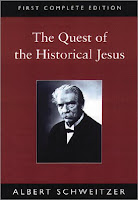At the end of an excellent treatment of Jesus' healings and exorcisms, Maurice Casey considers Morton Smith's Jesus the Magician, concluding that
I'd like to know which of Carlson's and Jeffery's arguments Casey finds unconvincing, but at least this new, solid work on the historical Jesus recognizes Secret Mark for what it is.
"Smith has completely misrepresented the cultural worlds of Jesus and the synoptic Gospels. His accusation that Jesus was a magician appears to be due to malicious hostility to Christianity. His misrepresentation of primary sources is so gross as to be virtually fraudulent. This should be borne in mind when considering The Secret Gospel of Mark..." p 278)Casey then later returns to Secret Mark in an appendix, underscoring Smith's disingenuous claims about the document he supposedly discovered: the rite of homoerotic sex "simply completes an exercise in sensationalist falsehood... nothing resembling the nocturnal initiation into mysteries described by Smith is known until more than a century after Jesus' death" (p 541); that the text of canonical Mark at 10:46 makes perfectly good sense contra Smith's claims (pp 541-542); and indeed "Smith's handling of supposedly primary source material, whether genuine or forged, is fraudulent from beginning to end" (pp 542-543). But in fact Smith did forge Secret Mark (p 543), and he "should have never been believed by anyone" (ibid). Casey then cites Stephen Carlson and Peter Jeffery, not "to imply that all their arguments are convincing, but that those of their arguments which are convincing, taken together with my comments here, and on Jesus the Magician, together form an overwhelming argument of cumulative weight" (p 543, n. 57).
I'd like to know which of Carlson's and Jeffery's arguments Casey finds unconvincing, but at least this new, solid work on the historical Jesus recognizes Secret Mark for what it is.


























